Are you wondering if live plants keep aquariums clean? I’m going to answer the same question here.
Live aquarium plants keep aquariums clean by removing harmful toxins like ammonia and nitrates from your fish tank. They also take in carbon dioxide and release oxygen into the tank, keeping your tank well-oxygenated. Besides, live plants also help to control algae in your aquarium.
Keep reading as I’m going to tell you the best live aquarium plants you can keep in your aquarium.
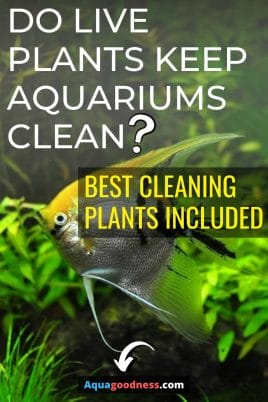
Table of Contents
How Do Live Plants Keep Aquariums Clean?
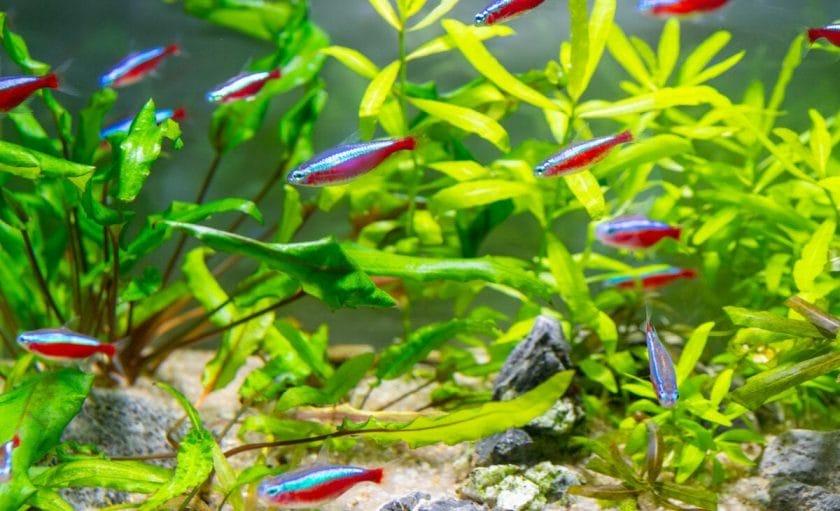
It’s a scientifically proven fact that keeping live plants in your aquarium is highly beneficial to tank hygiene and fish health.
Keeping live plants is going to aid in mimicking your fish’s natural environment, which, as a fish owner, should be your ultimate goal.
Plants that are alive are going to be excellent at filtering out toxins like ammonia and nitrate while absorbing carbon dioxide, releasing essential oxygen, and providing your fish with a renewable source of food and shelter.
What’s especially great about keeping live plants in your tank is that they can work in tandem with your aquarium filter to keep the entire aquarium system pristine and in optimal health.
So keeping live plants is not only going to keep your tank healthy; it’s also going to help to keep your filtration system clean.
Best Live Aquarium Plants for Keeping your Aquarium Clean
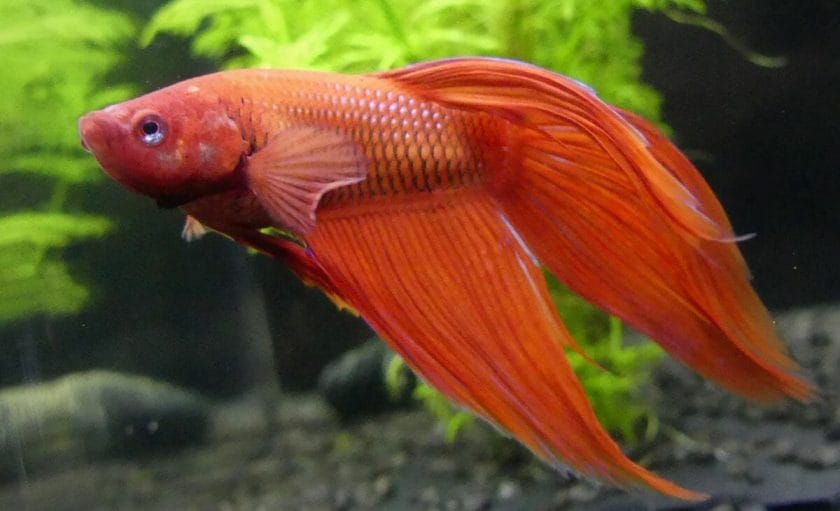
Now I’m going to tell you the best live aquarium plants you can keep in your tank to keep your tank clean.
These plants are fairly low maintenance and easy to care for so if you’re new to keeping live aquarium plants, these are great ones to start with.
Besides, I’ve included different types of plants in this list so you can choose the plant or plants according to your liking or need.
Water Lettuce
See more images at Amazon here
| PARAMETERS | VALUES |
|---|---|
| PLANT | Water Lettuce |
| SCIENTIFIC NAME | Pistia |
| FAMILY | Araceae |
| CARE LEVEL | Moderate |
| LIGHT REQUIREMENT | Moderate |
| GROWTH RATE | Moderate |
| TEMPERATURE | 70 to 80 °F |
| pH | 6.5-7.2 pH |
| HARDNESS | Soft to Moderately Hard |
| PLACEMENT | Water Surface |
| MAXIMUM SIZE | 10 inches |
| MINIMUM TANK SIZE | 10 gallon |
This plant that floats at the top of your tank not only looks whimsical but helps to keep algae production to a minimum as well as aids in regulating water temperatures.
In addition to helping keep your aquarium’s ecosystem regulated, water lettuce plants are excellent nurseries for young fish.
Water lettuce plants are excellent sources of food for your fish and are effective at removing up to 84% of chemicals and nitrates from your tank’s water.
To keep your water lettuce healthy, keep water temperatures between 70 and 80 degrees, and pH balances between 6.5 and 7.5.
Check the price of this plant at Amazon here
Dwarf Hairgrass
See more images at Amazon here
| PARAMETERS | VALUES |
|---|---|
| PLANT | Dwarf Hairgrass |
| SCIENTIFIC NAME | Eleocharis acicularis |
| FAMILY | Cyperaceae |
| CARE LEVEL | Easy |
| LIGHT REQUIREMENT | Medium |
| GROWTH RATE | Fast |
| TEMPERATURE | 50-85°F |
| pH | 6.5-7.5 |
| HARDNESS | 2-10 KH |
| PLACEMENT | Carpet |
| MAXIMUM SIZE | 6 inches |
| MINIMUM TANK SIZE | 10 gallons |
This beautiful, lush carpeting plant is a remarkable aesthetic choice for your tank and can keep your tank clean by offering healthy bacteria, which in turn will boost the natural filtration capacity of your aquarium.
Maintenance of Dwarf Hairgrass is fairly simple. As long as conditions in the tank are between 70 to 83 degrees Fahrenheit and pH balances are between 5.0 and 7.5.
Other than that, the only real maintenance you need to do for this plant is to ensure the substrate is healthy and trim down the grass whenever it becomes too long for your liking.
Check the price of this plant at Amazon here
Amazon Sword
See more images at Amazon here
| PARAMETERS | VALUES |
|---|---|
| PLANT | Amazon sword |
| SCIENTIFIC NAME | Echinodorus grisebachii |
| FAMILY | Alismataceae |
| CARE LEVEL | Easy |
| LIGHT REQUIREMENT | Moderate |
| GROWTH RATE | Fast |
| TEMPERATURE | 60.8-82.4°F |
| pH | 6.5-7.5 pH |
| HARDNESS | 8-15°dH |
| PLACEMENT | Background |
| MAXIMUM SIZE | 16 Inches |
| MINIMUM TANK SIZE | 10 Gallons |
An Amazon Sword plant is an excellent live plant to keep your aquarium clean. An Amazon Sword is known to grow fairly fast and can reach lengths of up to 20 inches if not trimmed regularly.
If you decide to get this plant, make sure that you keep up with trimmings, or get a tank to accommodate their size.
Amazon Swords need to be in a water environment that is between 72 and 82 degrees Fahrenheit with a pH ranging from 6.5 to 7.5.
This plant will thrive in moderate lighting and should be kept in this light for at least 11 hours a day.
Check the price of this plant at Amazon here
Java Fern
See more images at Amazon here
| PARAMETERS | VALUES |
|---|---|
| PLANT | Java Fern |
| COMMON NAMES | Java Fern |
| SCIENTIFIC NAME | Microsorum pteropus |
| FAMILY | Polypodiaceae |
| CARE LEVEL | Easy |
| LIGHT REQUIREMENT | Low to Moderate |
| GROWTH RATE | Low to Moderate |
| TEMPERATURE | 68-82oF |
| pH | 6.0-7.5 |
| HARDNESS | 60-160 ppm |
| PLACEMENT | Mid to Background |
| MAXIMUM SIZE | 13.5 inches |
| MINIMUM TANK SIZE | 5 Gallons |
Java ferns are a resilient, fairly low-maintenance plant that can help to maintain your tank’s hygiene.
To maintain the health of a Java fern, you should keep its environmental temperature in the range of 70 to 82 degrees Fahrenheit with a pH between 6.0 and 7.0.
This plant does not require substrate or soil to thrive, which makes it excellent for those with little experience taking care of live plants.
Instead of planting a Java fern into the bed of your tank, consider attaching this plant to a piece of driftwood or rock with aquarium-safe glue or thread.
Check the price of this plant at Amazon here
Christmas Moss
See more images at Amazon here
| PARAMETERS | VALUES |
|---|---|
| PLANT | Christmas moss |
| COMMON NAMES | Christmas moss |
| SCIENTIFIC NAME | Vesicularia montagnei |
| FAMILY | Hypnaceae |
| CARE LEVEL | Easy |
| LIGHT REQUIREMENT | Moderate to high |
| GROWTH RATE | Moderate to high |
| TEMPERATURE | 68-82°F |
| pH | 5-7.5 |
| HARDNESS | 5-20 dH |
| PLACEMENT | Floating, foreground |
| MAXIMUM SIZE | 4 inches |
| MINIMUM TANK SIZE | 5 gallon |
Christmas moss is another beginner-friendly plant that doesn’t require soil substrate to be healthy.
Known to be a versatile and helpful plant, Christmas moss can help to keep your tank clean in many different environments, as well as add a beautiful, lush texture to your tank’s landscape.
You’ll want to keep a Christmas moss plant in medium light setup, as this will encourage a healthy rate of growth.
To maintain the health of a Christmas moss plant, you’ll want to keep tank conditions 68 to 82 degrees Fahrenheit and pH balances between 6.0 and 7.5
Check the latest price of this plant at Amazon here
Other Benefits of Live Aquarium Plants
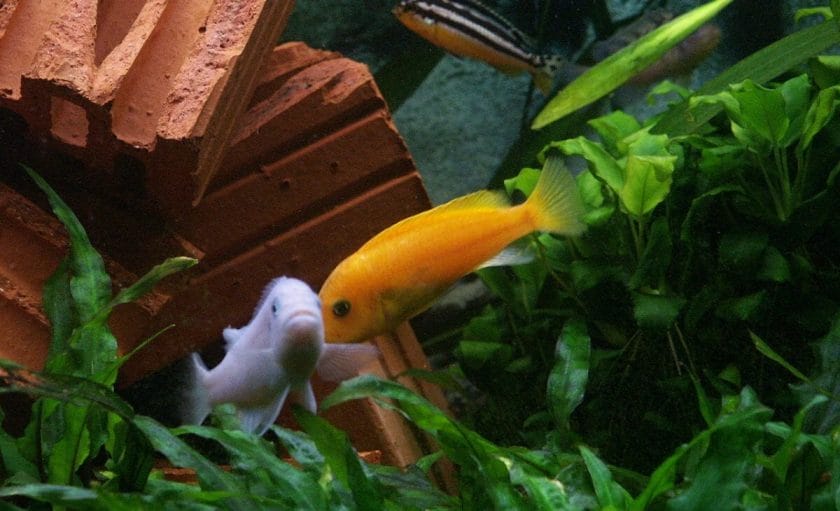
Fish feel more at home
When you incorporate live plants into your aquarium’s ecosystem, it helps to recreate your fish’s natural environment.
Having live plants in your tank is not only for aesthetic purposes, but can give your pet fish places to graze, take shelter, and even clean themselves in.
Natural food for fish
Having live plants in your tank is great for the health of your fish because it provides them with a renewable source of food.
As long as your plant’s substrate is healthy, you should expect your live aquarium plants to provide an everlasting source of nutrition for your fish.
Just make sure that your plants are healthy and alive, and cut away or replace any plants that appear to be brown or moldy, as unhealthy plants can harm your ecosystem and your fish.
Reduces Algae Growth
Placing live plants in your aquarium helps to combat algae growth because it starves algae in competition for nutrients. When there is more competition for nutrients in your tank’s ecosystem, the less of a chance algae has to accumulate in your aquarium.
Oxygen Levels
Just like plants that exist outside of the water, underwater plants will provide your aquarium with crucial oxygen to not only keep the ecosystem regulated but also to help it thrive.
When the plants are properly lit, photosynthesis takes place, which releases oxygen into the water. This process effectively helps to regulate pH levels and allows other plants in the tank to flourish.
Controls Temperature
Live plants can act as an extra insulation or cooling system for your tank, depending on what type of plant you get.
Floating plants such as water lettuce can act as excellent temperature regulators as they can keep excess heat out and keep temperatures in your tank steady.
More lush plants such as the Amazon Sword or Dwarf Hairgrass can act as insulation in keeping your tank’s water from getting too frigid.
Aesthetics
Nobody likes a boring tank, not even your fish. One of the main reasons people may want to get a fish tank in the first place is to observe a beautiful, thriving aquatic environment as close to the real thing as they can get.
To make your aquarium as visually appealing to you and your fish as possible, getting aquatic plants is just the trick to liven up the tank.
How to take care of Live Aquarium Plants
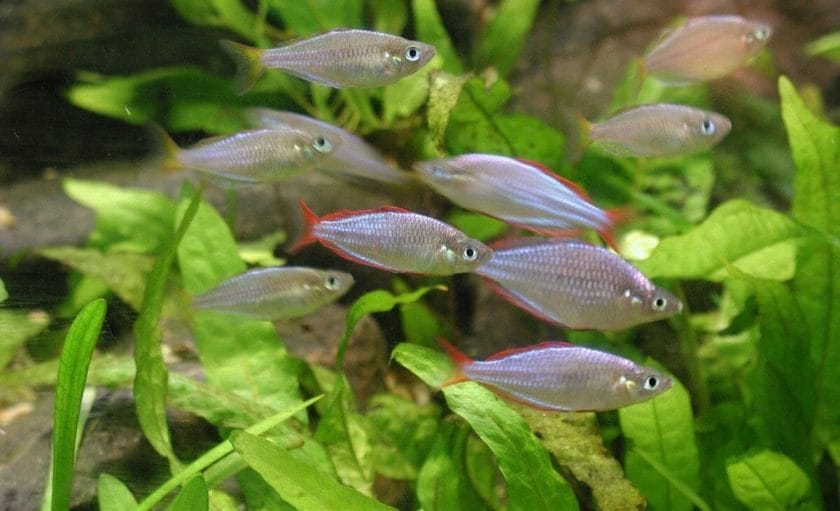
Now you know the benefits that live aquarium plants have to offer. So you want to keep some live plants in your tank.
But to reap the benefits of live aquarium plants, you’ve to take care of them to keep them healthy.
Lighting
What type of light you need for your aquatic plants mostly depends on which species of plant you are planning to keep.
Generally, moderate light will fare well for the average aquarium plant. If your aquarium is in an area where you know it’s not going to get loads of natural light, there are special lights made for underwater plants.
These underwater lamps will mimic the effects of the sun, allowing your plants to photosynthesize properly.
Proper Soil
For your plants to grow properly, you’re going to want to ensure that they have the proper foundation to thrive.
Choosing the right soil, or substrate, is going to make sure that your plants are rooted properly and have the best chance to grow to their fullest potential.
You should generally avoid ultra-fine sand or overly coarse rocks as your aquarium’s substrate; otherwise, your plants will just be floating all over the tank. Fine to medium-grade sand or gravel is generally going to be the best substrate for your aquarium plants.
Fertilizer
Fertilizer is essential in making sure that your substrate is providing your plants with adequate levels of nutrients.
How often you fertilize your substrate depends on the type of soil you have and the temperature at which you keep your aquarium.
If your aquarium stays at a lower temperature, fertilization will likely not be needed as frequently. If you have a tropical aquarium that is a bit warmer, you’ll want to fertilize your soil more frequently.
Conclusion
Many amazing benefits come with including live plants in your aquarium landscape!
One of the most beneficial things that come with keeping plants in your tank is going to be the hygienic effects it will have on your tank.
Having plants in your tank will help to filter out potentially harmful chemicals, keep algae at bay, and allow your fish to get adequate levels of oxygen that will keep your entire environment lush, healthy, and happy!
If you’re new to live aquarium plants, you can start with the ones that I’ve mentioned in the article.




